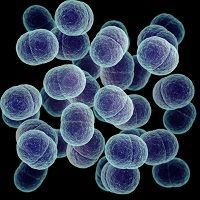Article
Researchers Document New York City's Bacterial Landscape
Author(s):
An analysis conducted by researchers at Weill Cornell Medical College of New York City's subway system yielded a wide array of harmless, beneficial, and dangerous bacteria.

An analysis conducted by researchers at Weill Cornell Medical College (WCMC) of New York City’s (NYC) subway system yielded a wide array of harmless, beneficial, and dangerous bacteria.
For 17 months, investigators and student volunteers swabbed the metal benches, stairway hand railings, trash cans, and kiosks of 24 subway lines located in the five NYC boroughs—used by an average of 5.5 million people daily in 2013—a WCMC press release pointed out. The team also sampled the trains’ seats, doors, poles, and handrails.
The first ever “PathoMap” (pathogen map), showed 57% of the 1,457 sequenced samples were bacteria not linked to disease. However, 37% were that of opportunistic bacteria that can be dangerous to a subset of susceptible people.
While only 12% of bacteria sampled were deemed dangerous, being associated to ailments like the Bubonic plague and anthrax, their DNA samples indicated they were not alive, the release also mentioned.
Furthermore, almost half of DNA taken from subways could not be linked to a specific organism, or were even identified prior to this study. The researchers noted this discovery highlighted urban area’s “vast wealth” of mysterious species.
"Our data show evidence that most bacteria in these densely populated, highly trafficked transit areas are neutral to human health, and much of it is commonly found on the skin or in the gastrointestinal tract," the study's senior investigator, Christopher E. Mason, an assistant professor in Weill Cornell's Department of Physiology and Biophysics and in the HRH Prince Alwaleed Bin Talal Bin Abdulaziz Al-Saud Institute for Computational Biomedicine (ICB), said. "These bacteria may even be helpful, since they can out-compete any dangerous bacteria."
The researchers claimed their study’s data, which was published in Cell Systems “could help long-term disease surveillance, bioterrorism threat mitigation, and health management in the built environment of cities.”
Currently, the investigators are comparing specimens taken from all four seasons to detect variations in bacterial composition.




